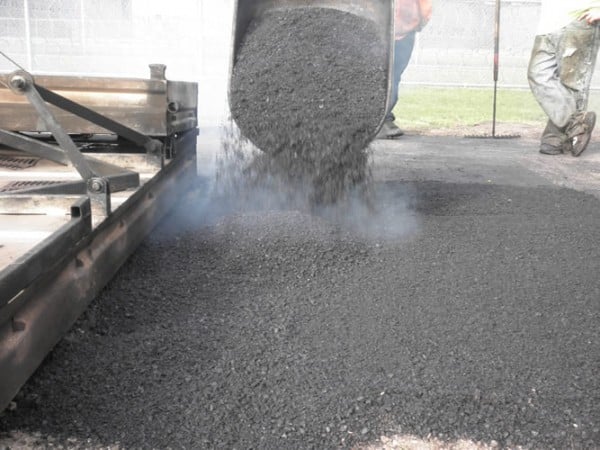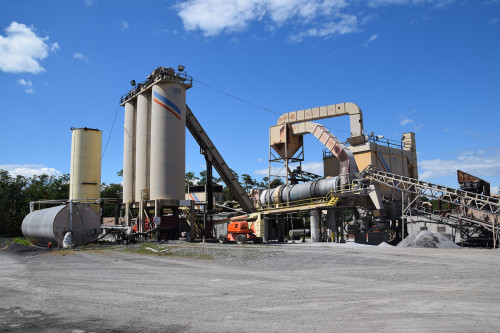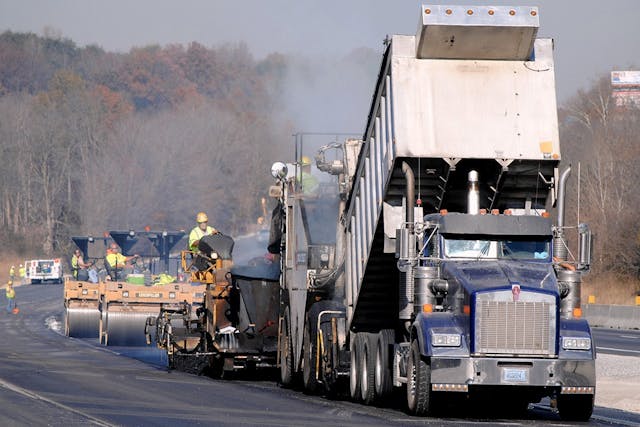Boost Residential Or Commercial Property Value and Performance with Hot Mix Asphalt Paving Solutions
Boost Residential Or Commercial Property Value and Performance with Hot Mix Asphalt Paving Solutions
Blog Article
Opening the Keys of Warm Mix Asphalt Technology
Discovering the depths of hot mix asphalt modern technology reveals a globe where precise processes and precise solutions assemble to shape our roads and framework. The combination of fillers, accumulations, and binders isn't merely a building and construction job however a strategic orchestration of longevity and performance.
Significance of Warm Mix Asphalt
Hot Mix Asphalt plays an important role in modern-day facilities development as a result of its sturdiness and cost-effectiveness. As the most generally utilized paving product for roads, freeways, and parking area, Warm Mix Asphalt offers a series of benefits that add to its value in building projects. One vital benefit is its capacity to withstand rush hour loads and rough climate conditions, giving a lasting and reliable surface for transport networks. In Addition, Hot Mix Asphalt is economical in both first construction and long-lasting upkeep, making it a recommended choice for numerous facilities jobs.
The sturdiness of Hot Mix Asphalt stems from its make-up, which consists of aggregates, binder, and filler products that are meticulously chosen and mixed to fulfill details performance requirements. On the whole, the relevance of Hot Mix Asphalt in infrastructure growth can not be underrated, as it proceeds to be a foundation of modern-day building methods.
Components of Asphalt Mixes
The make-up of asphalt mixes includes very carefully selected accumulations, binder, and filler materials that are vital for accomplishing details performance needs. Aggregates are the key element of asphalt blends, offering toughness and stability. These accumulations can be natural, such as crushed rock or crushed stone, or artificial, like recycled materials from old sidewalks. The binder, generally asphalt or asphalt cement, holds the aggregates with each other and offers versatility and durability to the mix. The option of the binder is crucial as it straight influences the mix's performance in various climate condition. Fillers, such as hydrated lime or Rose city concrete, are utilized to boost the mix's workability and aging resistance. Angled Parking.
The mix and proportion of these components play a considerable function in figuring out the top quality and efficiency of the asphalt mix. Designers carefully design the mix to meet particular demands, thinking about aspects like website traffic quantity, environment problems, and pavement life expectancy. Appropriate choice and balancing of aggregates, binder, and fillers are vital for producing long lasting, resilient asphalt sidewalks.
Mixing and Manufacturing Strategies

Once the aggregates are selected, the binder, typically asphalt concrete, is contributed to bind the products with each other. The binder's top quality and quantity considerably affect the mix's resistance, flexibility, and strength to environmental factors. Additionally, fillers like hydrated lime or Portland cement may be incorporated to enhance specific characteristics of the asphalt mix, such as its workability or moisture resistance.
Throughout manufacturing, the accumulations and binder are heated up, normally in between 250-325 ° F(121-163 ° C ), to help with mixing and ensure proper coating of the accumulations. The blending procedure needs to be complete to accomplish a homogeneous mixture that advertises the preferred performance characteristics of the asphalt. Numerous strategies, such as batch mixing or drum blending, are utilized to accomplish consistent and high-quality asphalt mixes for building and construction jobs.
Elements Affecting Asphalt Efficiency
Elements affecting asphalt performance include an array of variables that impact the longevity, durability, and total quality of asphalt pavements. One crucial factor is the high quality of products used in the asphalt mix.

Ecological problems also affect asphalt performance. Temperature level variations, wetness infiltration, and web traffic loads can all Read Full Article affect the structural stability of the sidewalk. Style factors to consider, such as pavement density and drainage, are crucial in guaranteeing the lasting performance of the asphalt sidewalk. By thoroughly taking into consideration these elements, designers and contractors can optimize asphalt performance and improve the life span of pavements.
Lasting Practices in Asphalt Innovation

WMA permits for the production and positioning of asphalt mixes at reduced temperatures contrasted to typical hot-mix asphalt, resulting in minimized energy usage and greenhouse gas emissions. The use of permeable asphalt mixes can aid reduce stormwater drainage issues by permitting water to infiltrate with the sidewalk and into the ground, advertising natural water filtering and recharge processes.
Verdict
To conclude, hot mix asphalt innovation plays a crucial function in modern-day infrastructure advancement as a result of its resilience and cost-effectiveness. By meticulously stabilizing components, utilizing correct blending strategies, and considering different aspects, designers can develop high-quality asphalt mixes that endure rush hour lots and rough weather conditions. Embracing sustainable practices, such as using warm-mix technologies and recycled materials, even more enhances the environmental friendliness of asphalt technology.
Mixing and manufacturing strategies in warm mix asphalt modern technology entail the exact combination and processing of aggregates, binder, and fillers to develop a high-performance and sturdy asphalt mix.Variables affecting asphalt efficiency include a range of variables that impact the durability, long life, and total top quality of asphalt pavements. Sustainable techniques in asphalt innovation include various initiatives intended at minimizing the environmental impact of asphalt manufacturing and paving procedures. By integrating recovered asphalt you can check here pavement (RAP) and recycled asphalt tiles (RAS) right into new asphalt blends, the sector can considerably reduce the intake of raw products and energy, while likewise decreasing garbage dump waste.
WMA allows for the manufacturing and positioning of asphalt mixes at lower temperature levels contrasted to standard hot-mix asphalt, resulting in decreased energy intake and greenhouse gas discharges.
Report this page